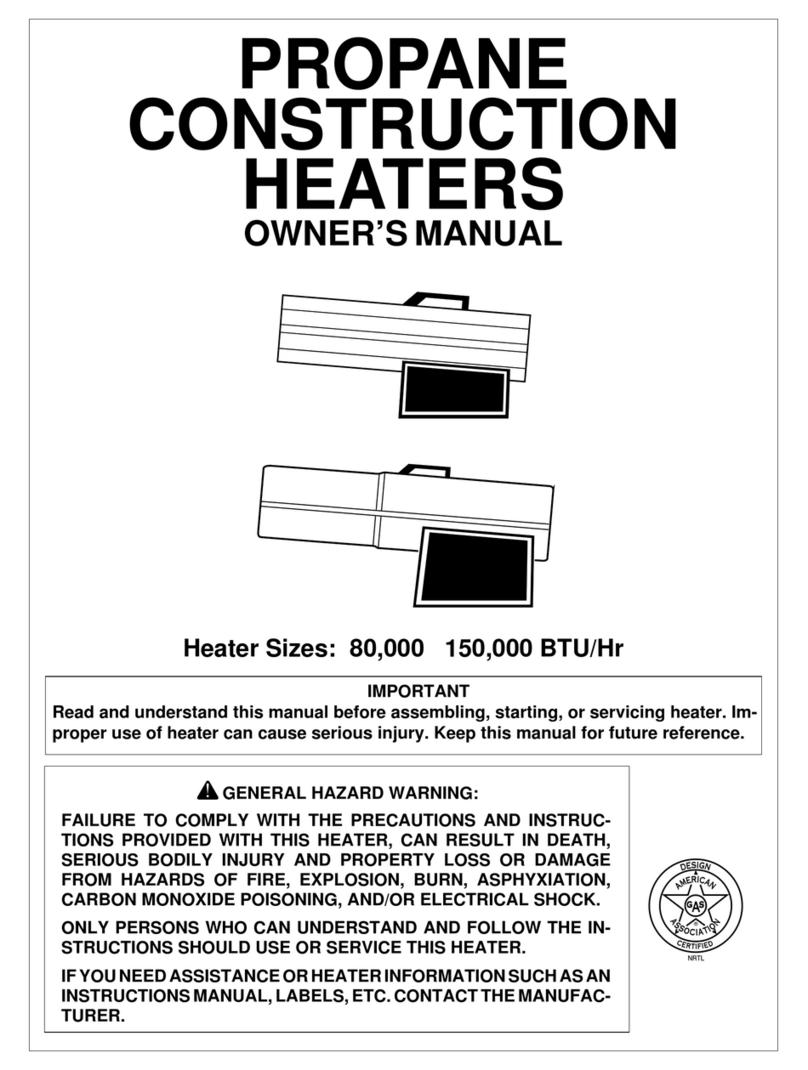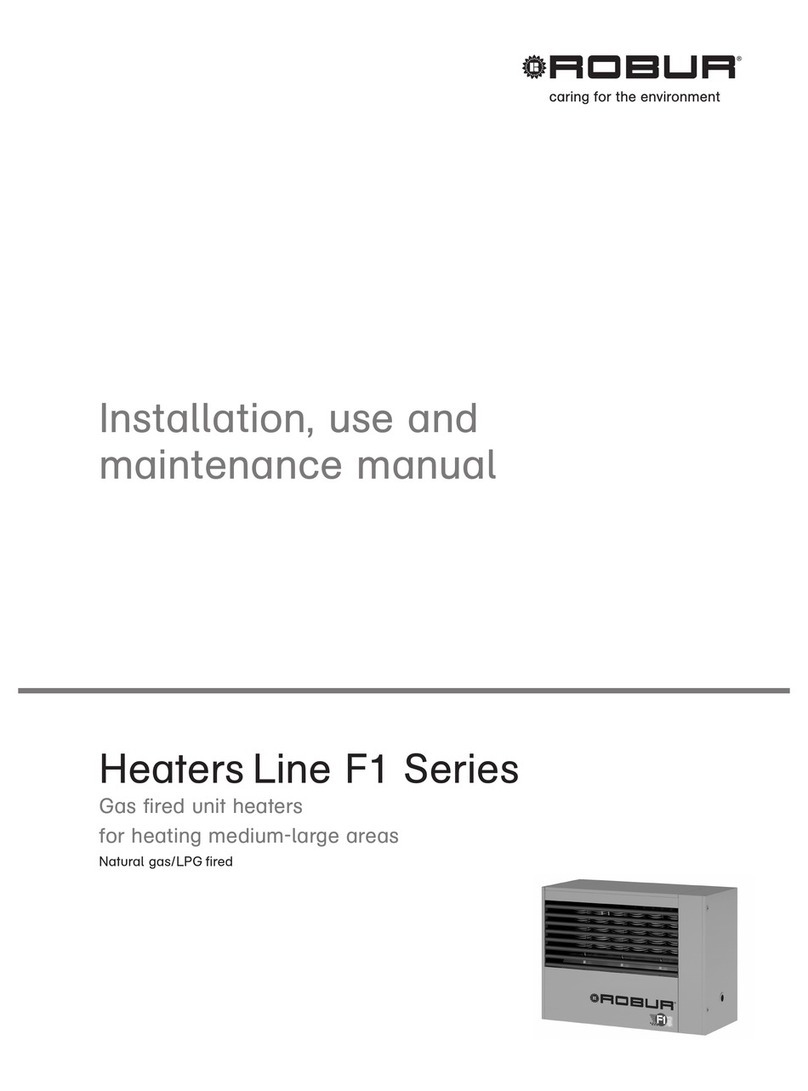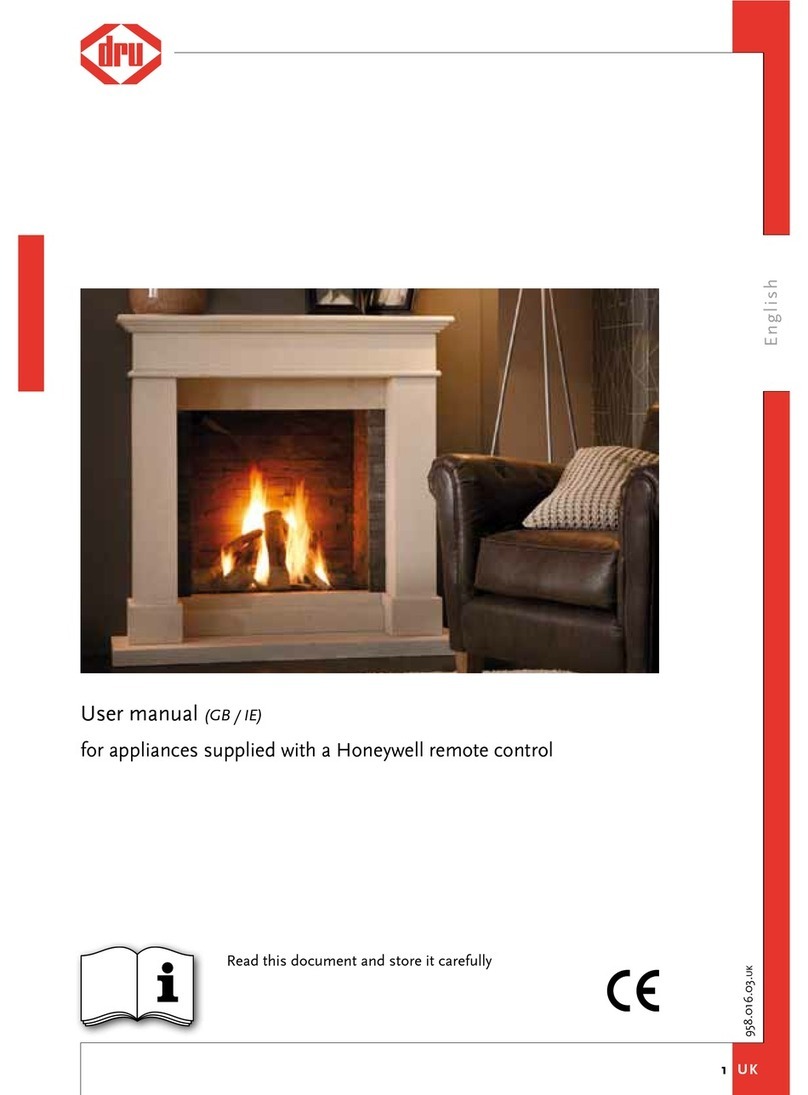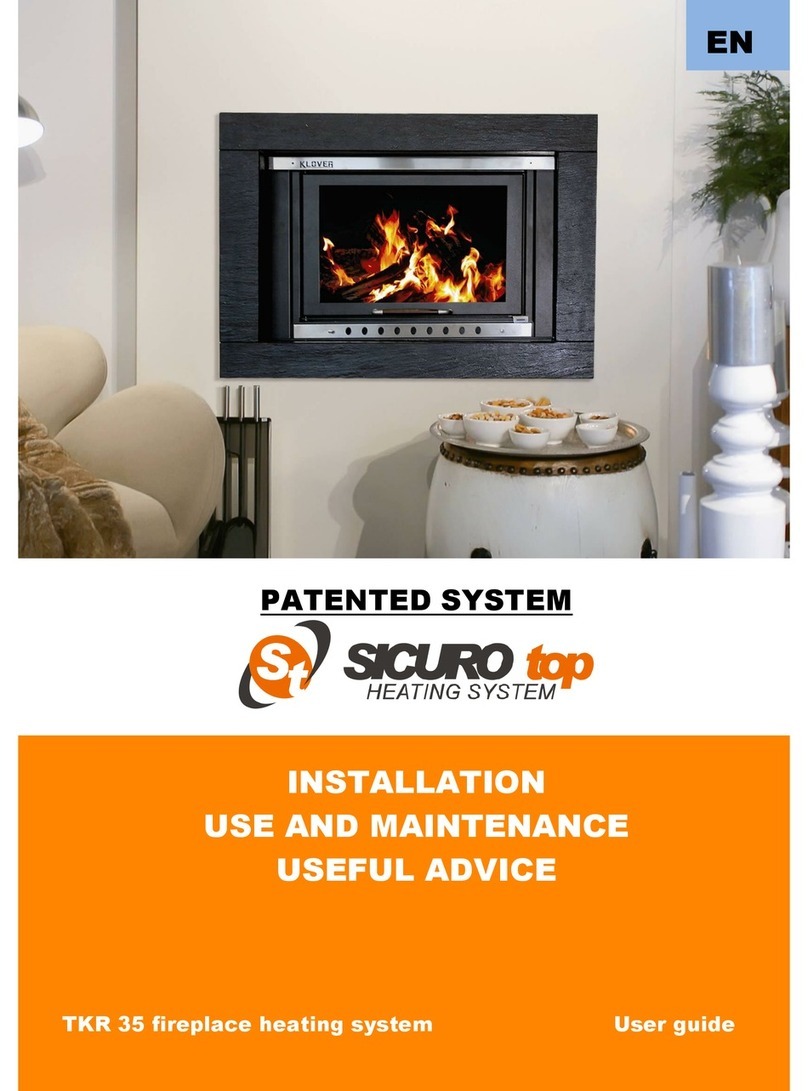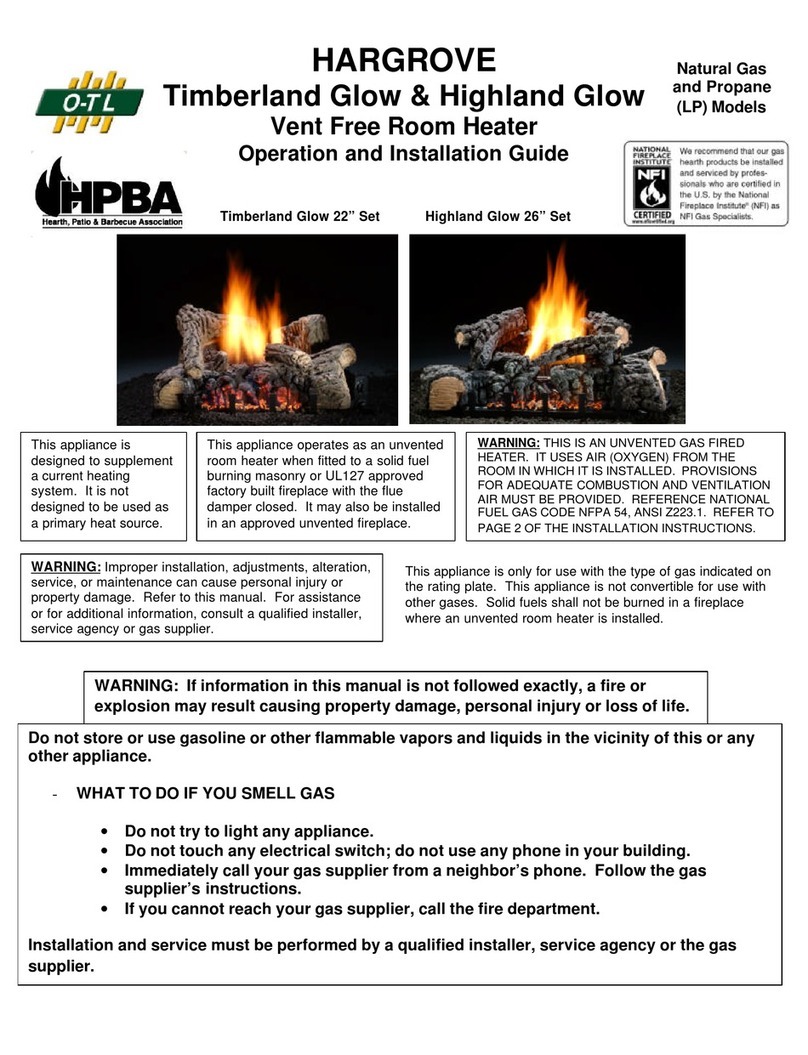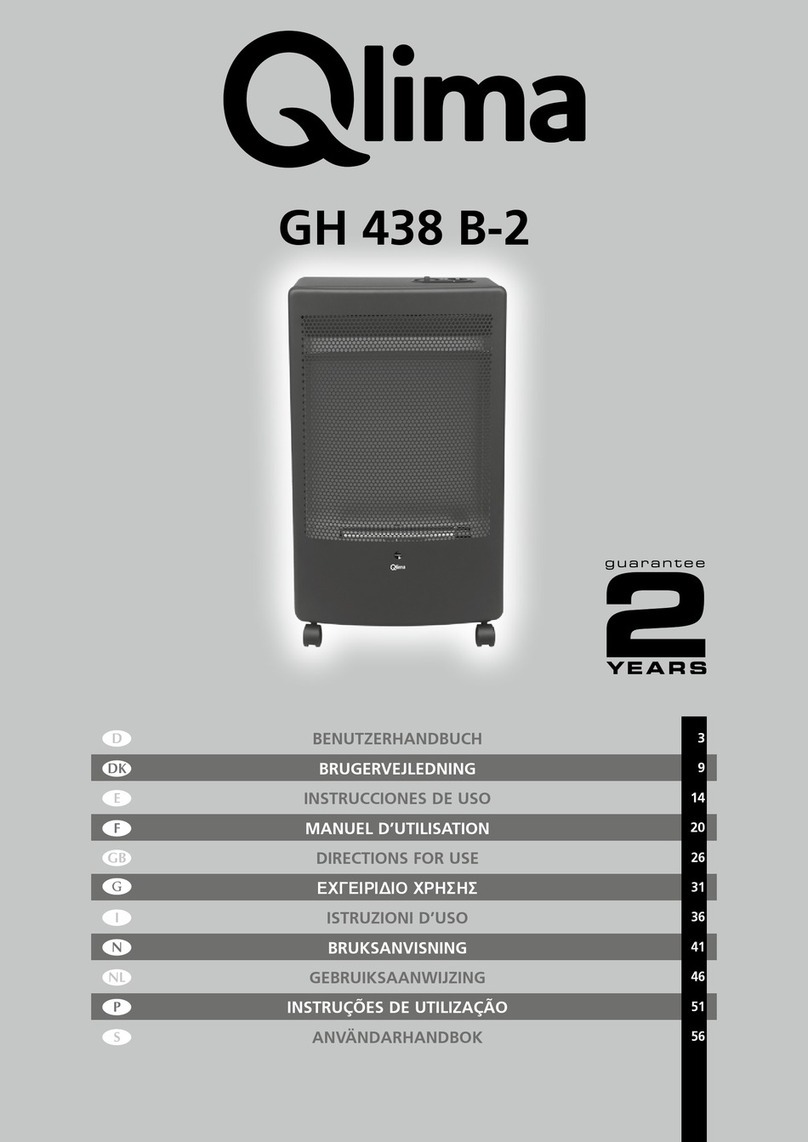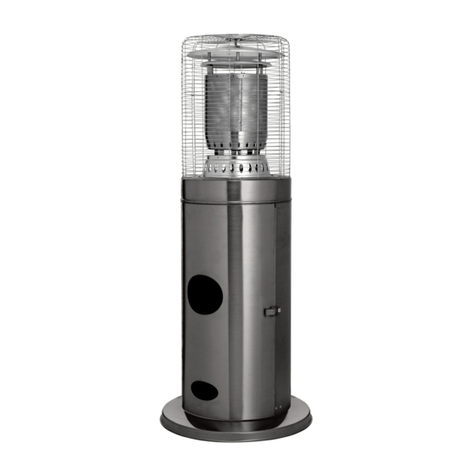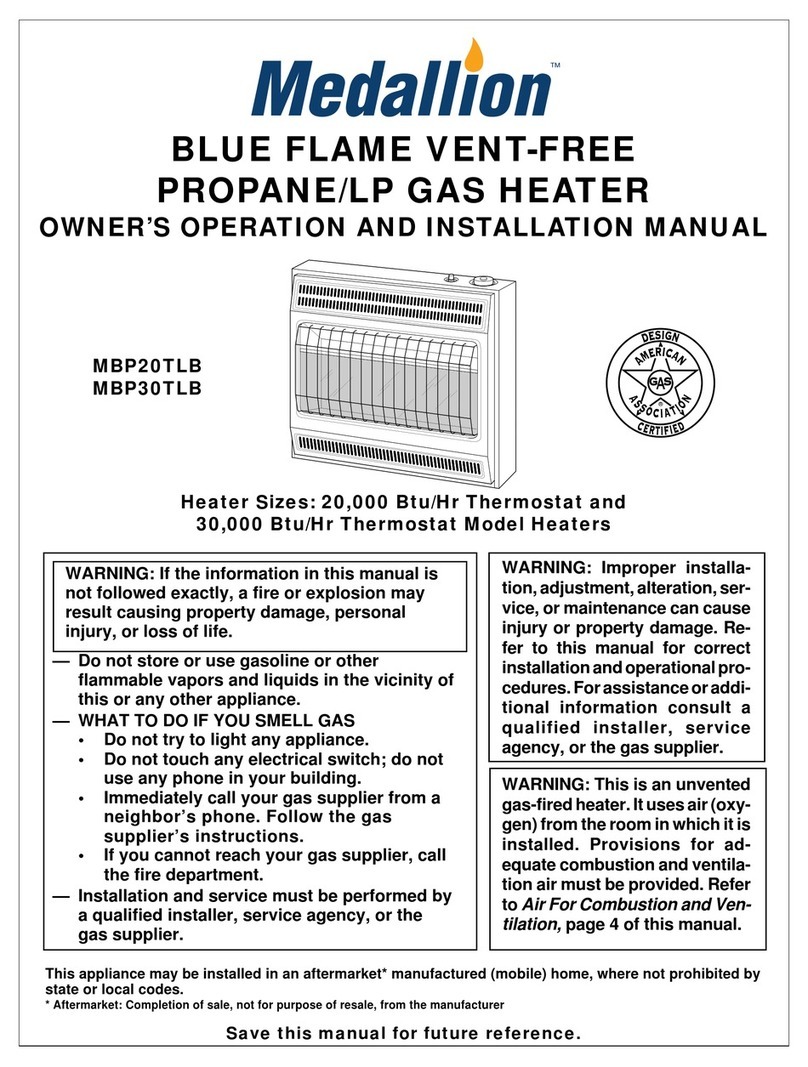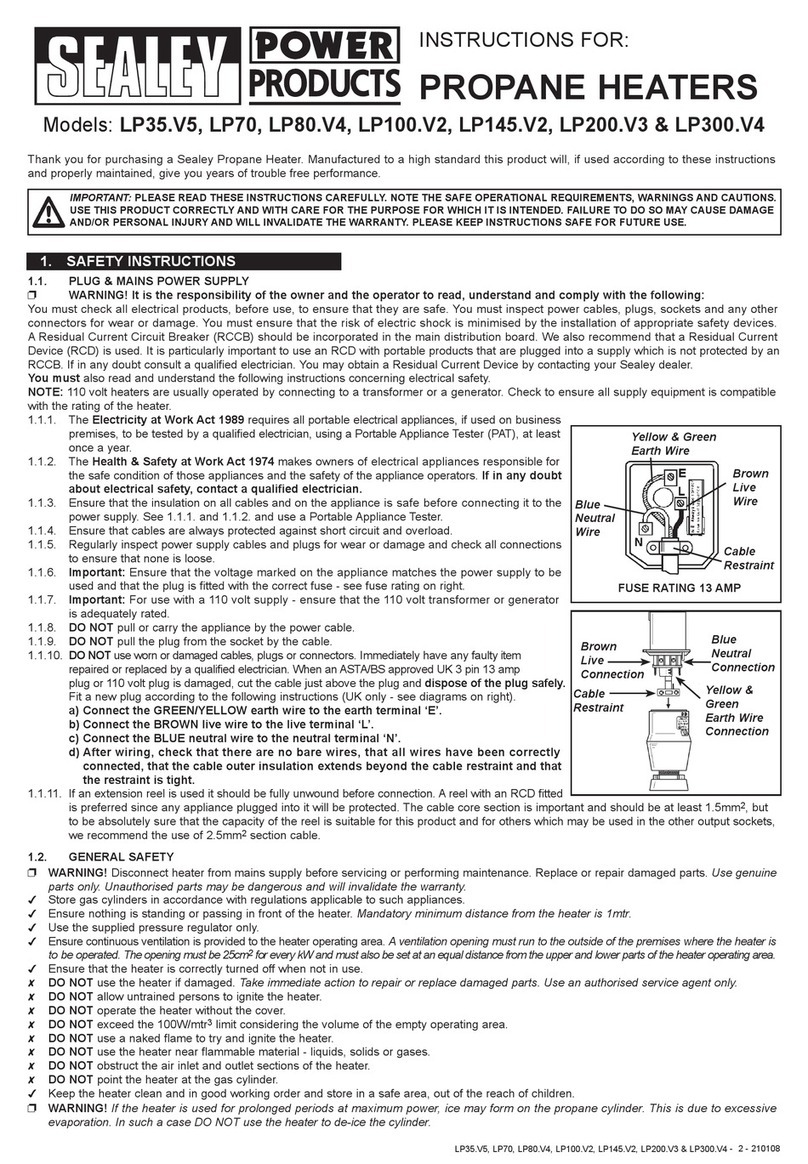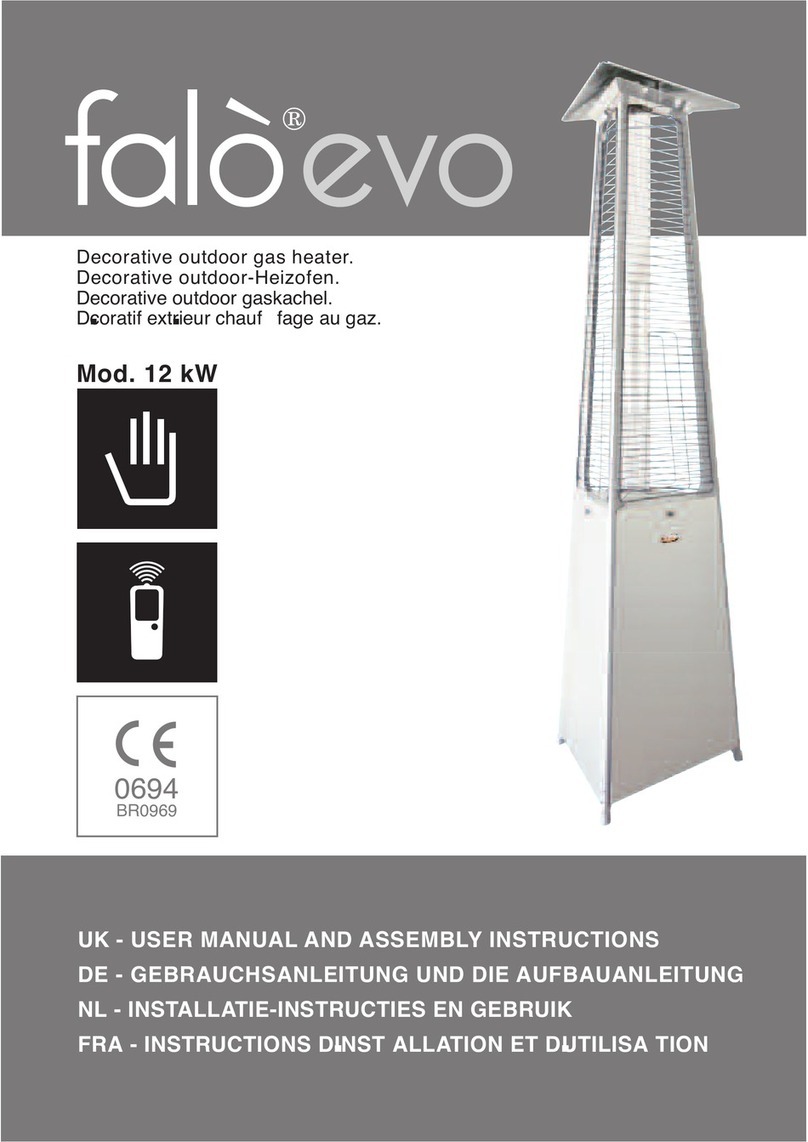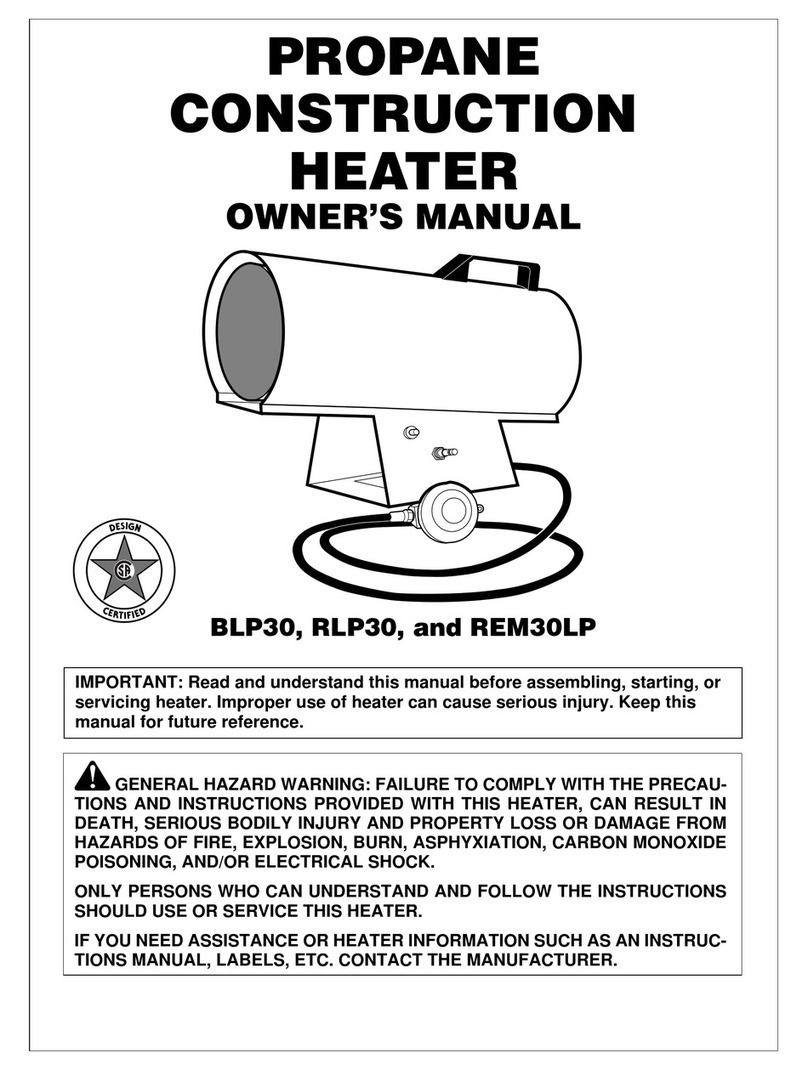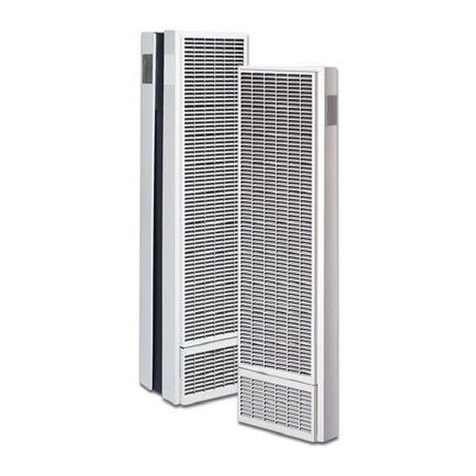9
Figure 1 - Ventilation Air from
Inside Building
Figure 2 - Ventilation Air from
Outdoors
Ventilation Air From Inside Building
This fresh air would come from adjoining un-
conned space. When ventilating to an adjoin-
ing unconned space, you must provide two
permanent openings: one within 12 inches of
the wall connecting the two spaces (see op-
tions 1 and 2, Figure 1). You can also remove
door into adjoining room (see option 3, Figure
2). Follow the National Fuel Gas Code NFPA
54/ANS Z223.1. Air for Combustion and Ven-
tilation for required size of ventilation grills or
ducts.
Ventilation Air From Outdoors
Provide extra fresh air by using ventilation grills
or duct. You must provide two permanent
openings: one within 12 inches of the
ceiling and one within 12 inches of the oor
Connect these items directly to the outdoors
or spaces open to the outdoors. These spaces
include attics and crawl spaces. Follow the
National Fuel Gas Code NFPA 54/ANS Z223.1,.
Air for Combustion and Ventilation
for required size of ventilation grills or ducts.
The space in the above example is a conned space because the actual BTU/hr used
is more than the maximum BTU/hr the space can support. You must provide additional
fresh air. Your options are as follows:
Rework worksheet, adding the space of an adjoining room. If the extra space
provides an unconned space, remove door to adjoining room or add ventilation grills
between rooms. See “Ventilation Air From Inside Building”,page 9.
Vent room directly to the outdoors. See “Ventilation Air From Outdoors”, page 9.
Install a lower BTU/hr heater, if lower BTU/hr size makes room unconfined. If the
actual BTU/hr used is less than the maximum BTU/hr the space can support, the
space is an unconned space. You will need no additional fresh air ventilation.
NOTE: If the area in which the heater may be operated is smaller than that dened
as an unconned space or if the building is of unusually tight construction, provide
adequate combustion and ventilation air by one of the methods described in the
National Fuel Gas Code, ANS Z223.1/NFPA. Air for combustion and ventilation or
applicable local codes.
a)
b)
c)
4. Compare the maximum BTU/hr the space can support with the actual amount of
BTU/hr used
BTU/hr (maximum the space can support)
BTU/hr (actual amount of BTU/hr used)
Example : 51,200 BTU/hr(maximum the space can support)
71,000 BTU/hr(actual amount of BTU/hr used)
